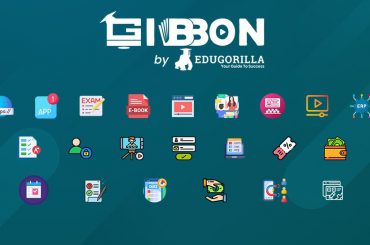It’s no wonder, then, that technology has infiltrated and stated its presence in the education sector. Education, a profession that has the greatest impact on individuals and society as a whole, is in desperate need of a revolution. Various parts of education, such as learning management and content management, have changed as a result of technological advancements. Descriptive tests have been ranked as the finest evaluations for determining learning outcomes in a variety of situations. The possibility of delays and inaccuracies has long been a stumbling block in the effective implementation of a large-scale descriptive examination.

History Of Digital Evaluation
- In 1999, the University of Cambridge put computerized evaluation to the test for the Local Examinations Syndicate.
- In 2004, digital evaluation or evaluation using computers was designated as a best practice. The Central Board of Secondary Education (CBSE) in India kicked out the process of accelerating the implementation of this technology in the country. Various educational institutions throughout the world are now using this rating system.
- The Central Board of Secondary Education in India created the groundwork for online tests and sowed the seeds for a successful digital assessment system. This method is presently being used by a number of institutes around the country.
Definition Of Digital Evaluation and Its Working
In the sphere of e-learning, digital evaluation is just nothing short of a revolution. With the growing popularity of online tests, it was critical to have a reliable digital grading system in place. So, digital evaluation is just the evaluation of answer sheets with the help of computers, No manual work is required in the case of digital evaluation. It was simple to build a digital evaluation system because most online tests were done in the MCQ style. It became faster and more efficient to evaluate the answer sheets and produce correct results.
Instead of marking a scanned script or online answer on paper, assessors can use the digital evaluation method to mark it on the computer screen. Every step of the manual paper review procedure may be reproduced using this system. This, along with the digital evaluation system’s extensive versatility, which allows users to tailor tools to their own needs, makes adoption easier. The automated evaluation workflow allows for the construction of a transparent procedure with a high level of security.
It allows evaluators to mark response scripts with a single mouse click. In addition, top examiners may monitor and evaluate the examination process through numerous dashboards. As a consequence, the risk of mistakes and malpractices is decreased, which improves the correctness of the review process. The solution’s ability to provide students with annotated response scripts on demand makes the process fair.
How to Put a Digital Evaluation System in Place
The implementation of a digital evaluation system requires the following steps:
- Identify the Aim: The first step in building a digital evaluation system is to determine the aims and strengths of your institution. This is necessary since the money spent on digital evaluation should never be squandered. Find out what problems you have on a regular basis and make a list of the most prevalent ones. While examining the answer sheets, discuss with your personnel the prevalent challenges they are encountering.
- Arrange Resources: After you’ve determined your objectives, you’ll need to start thinking about how you’ll get the resources you’ll need. Digital scanners, computer systems with high speed, learning management software, AI-powered tools, and other technologies are examples of available resources. Determine which tools are appropriate for your budget and requirements.

- Trial Running of System Is Must: Evaluators can provide a grade to the solutions based on the system’s onscreen suggestions. Conduct a practice test with a restricted group of pupils. Make a comprehensive examination of the software and hardware. If you’re using an Optical Mark Reading or OMR based test, scan the answer sheets and input them into the computer. Repeat the trial run to eliminate undesirable issues and ensure a clean system.
- Schedule a Training Session For Users: Conduct a training session for employees to acquaint them with the system and its advantages. This offers individuals a measure of control and confidence in their abilities to operate the system.
- Finally, Launch the Digital Evaluation System: Put the system into operation after several trial sessions and well-organized teacher training. Put the digital evaluation process to the test and watch the advantages unfold right before your eyes. Continuously monitor the system’s functioning and examine it on a regular basis to ensure it has the most up-to-date features. If the system fails, it’s a good idea to have a backup plan in place so that you can keep working until the problem is fixed.
Benefits of Digital Evaluation System and Drawbacks of Conventional Approach
| Benefits | Drawbacks |
| It is convenient and easy to use even if you have basic knowledge of computers. | It is very tough to evaluate the answer copy if the teacher does not have proper knowledge regarding the subject. |
| It provides high security to the stored data. The student’s data cannot be leaked from the computer. | The results can be leaked in the case of manual checking. |
| A higher number of answer sheets can be evaluated within a short period of time using a digital evaluation system. | It is very time consuming as all the work is done manually in the conventional method of evaluation. |
| Digital evaluation has fewer chances of errors in comparison to manual evaluation. | Higher chances of errors are there in manual checking of answers copies. |
| Equivalent reports are generated using Digital Evaluation System. This means there is no partiality with the students in the marks of their copies are checked using Digital Evaluation System. | Teachers are sometimes partial in providing more marks to their favourite students. |
Any test must include an evaluation component. It provides us with precise information about a student’s success on a certain test by means of their scores. You might deduce the many aspects of their improvement from this. The assessment procedure was done manually for a long period. It frequently proved to be rather time-consuming in large-scale examinations. Fortunately, because the majority of tests are now taken and completed digitally, the evaluation process has also moved towards a computerized or digital process and, more crucially, automated.
ABOUT GIBBON
Gibbon is a Plug and Play solution offered by EduGorilla, for anyone with a skill to teach. Gibbon helps you to take your classes online and earn independently.
- Gibbon gives you the ability to conduct & record LIVE classes, host unlimited video courses, provide online mock tests, and conduct online tests with LIVE proctoring abilities.
- Gibbon also provides you ready-made content of 1600+ Competitive, Entrance, and Academic exams from around the country.
- Gibbon helps you reach out to more students online and get a complete marketing setup.
- We have helped more than 3000 Brands, 10000 Institutes, 20000 Teachers and 2 Crore Students, transform their education and future.
Gibbon stands for “Online-Ready Teachers for a Future-Ready India”.
To get started, book your free demo now.






